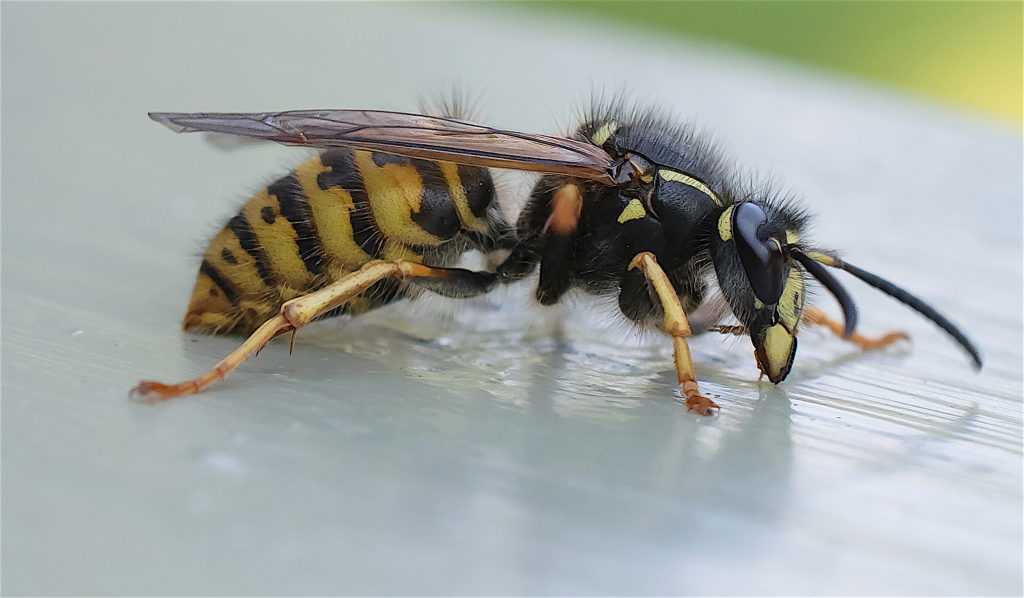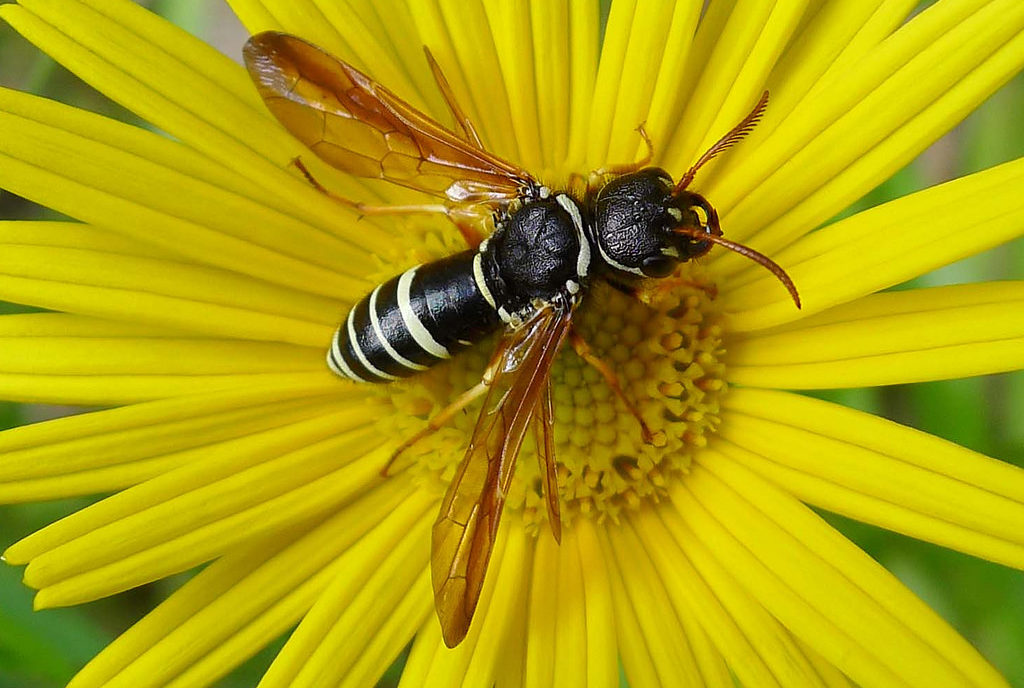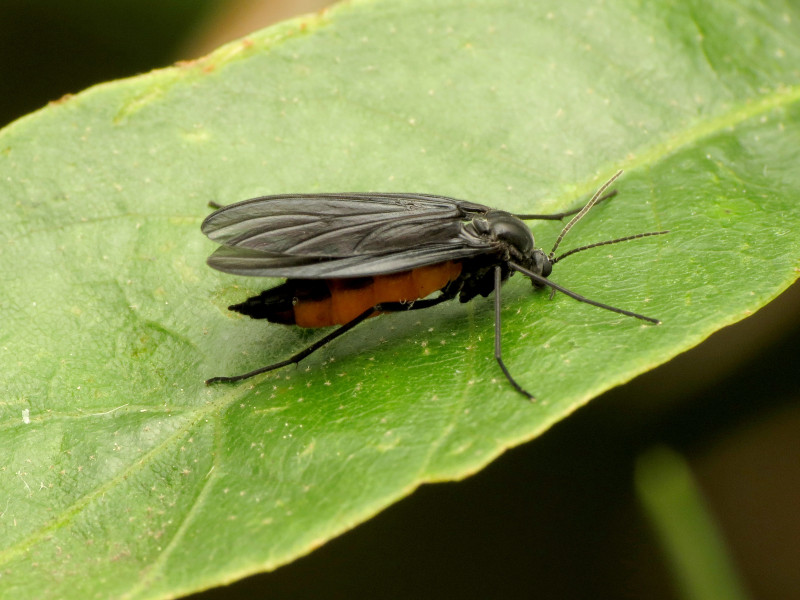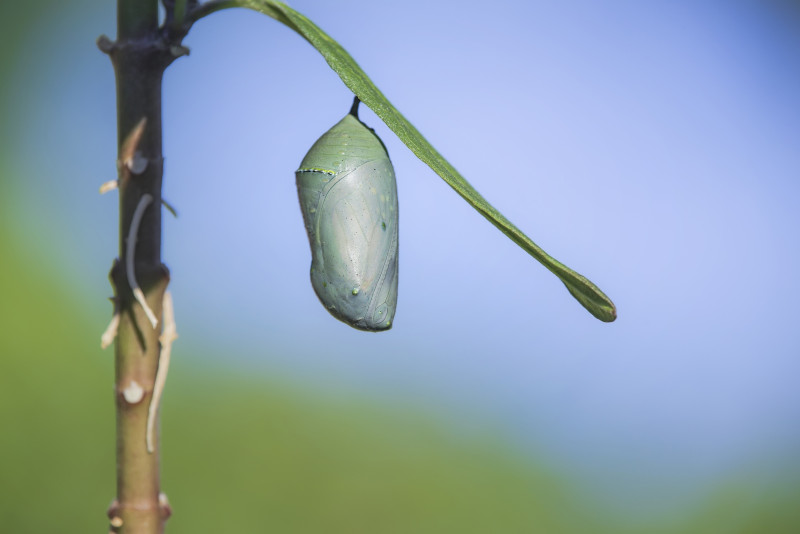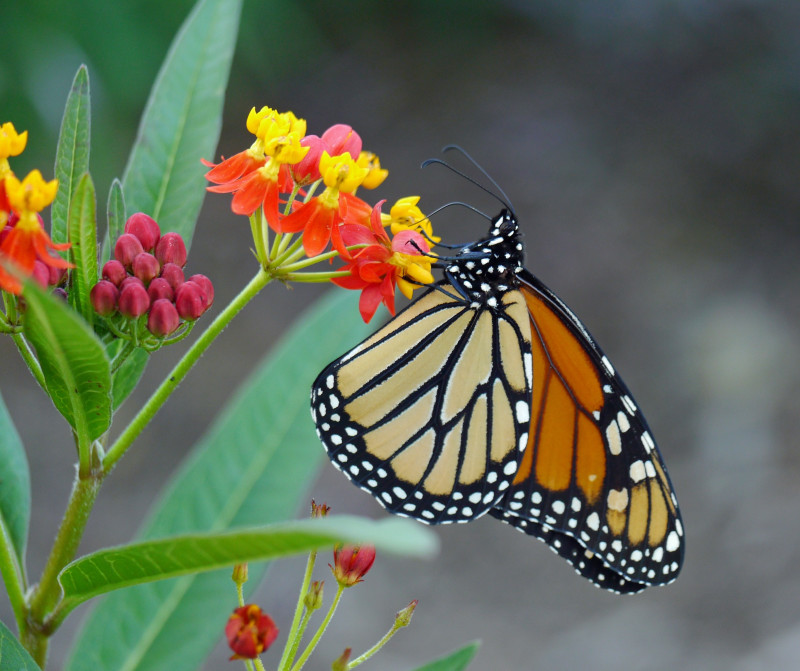In summer, our yards are virtually abuzz with bees, wasps, ants, and sawflies, and they can make people nervous. When they come close, it may appear there’s an imminent attack. But they’re simply checking us out, or maybe we’ve stepped into the path they had set out on. They aren’t at all interested in humans and sting or bite only when they feel threatened. So don’t wave your arms or swat at them; there’s usually no need to worry. They’re just going about their busy day, and much of it directly benefits us.
How they benefit us
Bees are known for pollinating our plants and producing honey for backyard beekeepers. But wasps also pollinate, as well as prey on numerous pest insects. Ants aren’t useless critters, either. They clean up organic debris, turn our soil, and feed on annoying pests, such as slugs, aphids, and spider mites. And their tunneling habit is said to aerate the soil as much as earthworms do.1
On a broader scale, bees contribute billions of dollars annually to the U.S. Gross Domestic Product through crop pollination and the production of honey and beeswax. Parasitic wasps are valuable to farmers, many of whom buy them from commercial insectaries for biological pest control. And the insects themselves are an essential food source for other animals.
These flying critters are in the third largest order of insects, called Hymenoptera (hi-men-OP-terr-uh), which is from the Greek humen for membrane and pteron for wing, which describes two of their common features. The number of their species in the world varies, depending on the source. According to BugGuide.net, a community of professional and amateur entomologists, there are more than 153,000 species. The Smithsonian Institution and the Encyclopedia Britannica estimate about 115,000. Other sources range as low as 100,000. Most authorities agree, though, that 17,000 to 18,000 species are inhabitants of the United States.
Scientists believe Hymenopterans evolved from sawfly-like insects that first appeared more than 200 million years ago during the Triassic Period. They’re all found everywhere in the world, except for colder altitudes and the Polar Regions (an exception is the hardy bumblebee species, Bombus polaris, that ranges even into the Arctic.)
Common characteristics of Hymenopterans
- Two pairs of membranous (thin, often see-through) wings, although some species have wings only during mating flights (for instance, ants) or lack wings altogether. Wings have minimal veining, and the forewings are larger than the hindwings.
- The forewings and hindwings lock together with tiny hooks. In smaller species, this can give the impression of being just a single pair.
- Compound eyes, usually large, although a few ant and wasp species are blind.
- Chewing mouthparts, although some have a modified lower lip that forms a tongue.
- Females usually have an ovipositor (egg-laying organ) that’s modified to either saw, pierce, or sting.
- Life cycle: complete metamorphosis, which is a progression from an egg to a larva and then to a pupa from which they emerge as an adult.
Hymenopterans range in size from the tiny parasitic wasp, Dicopomorpha echmepterygis, that’s about 0.005-inch-long up to the 2.2 inches (0.13–56 mm) of the Asian Giant Hornet, Vespa mandarinia, which has a wing span of 3 inches (7.6 cm).
Hymenoptera’s two suborders
Hymenoptera is split into two suborders: Apocrita and Symphyta.
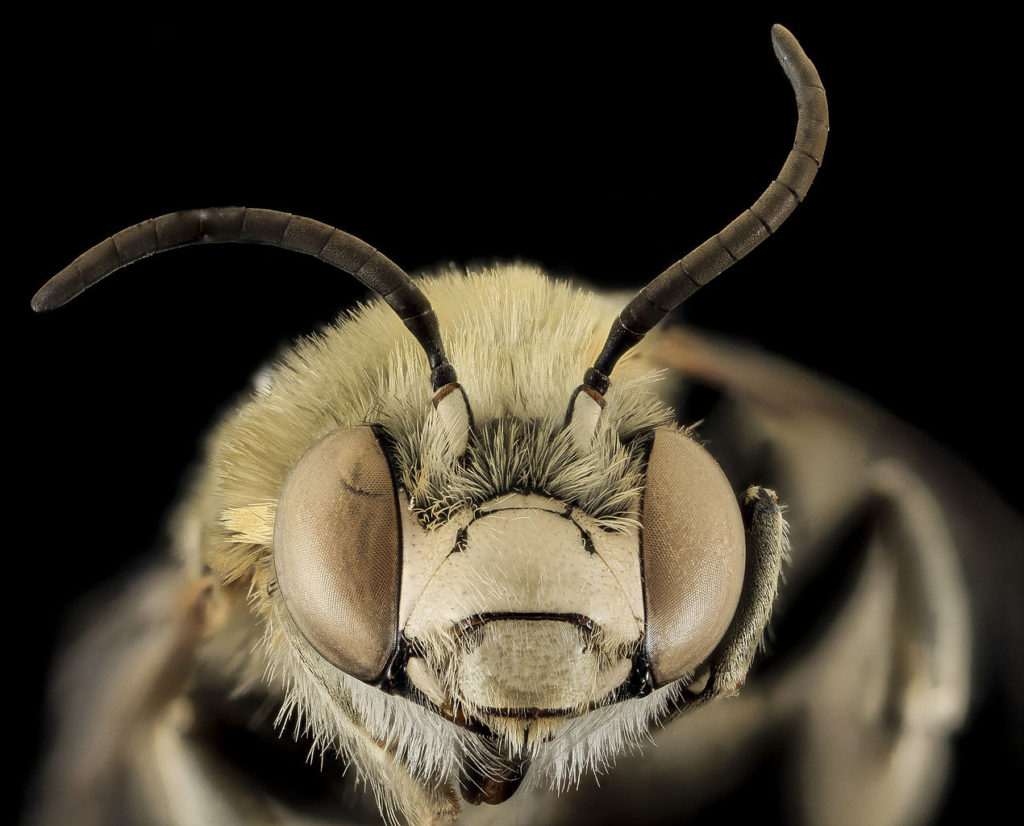
Those aren’t headphones on this Long-horned Bee, Anthophora montana. They’re her compound eyes. (Amber Reese, USGS Bee Inventory and Monitoring Lab; CC BY 2.0)
Apocrita (uh-PAH-cree-tuh) contains bees, wasps, and ants. This group can be easily identified because they have an abdominal constriction that separates the abdomen from the thorax and looks like a “waist.” Many also have a stinger.
Symphyta (sim-FI-tuh), is made up of the sawfly species. Sawflies are related to wasps but resemble flies because they lack the familiar, thin wasp “waist.” “Saw” comes from the females’ saw-like ovipositor, which they use to slit openings into plants where they lay their eggs.
Almost all sawflies possess two “knobs” on their thorax called cenchri—these hook to the underside of the wings and keep them in place while the insect is resting. Most sawflies lack a stinger.
Social structure
Most hymenopterans are solitary and live alone—mud dauber wasps, potter wasps, and mason bees are some examples. But others are social and live in colonies; well-known examples are honeybees, bumblebees, yellow jackets, and paper wasps. All ants are social.
Bees
Look closely, and you’ll see many kinds of bees in your yard, not just honeybees and bumblebees. There are also sweat bees, carpenter bees, mason bees, and others. All bee species have hair somewhere on their body. Their hair can help you distinguish bees from wasps, which are mostly hairless.
Their hair is important because it traps pollen as the bees move from flower to flower, sipping nectar. The pollen gets rubbed off and pollinates many flowers as they go. Bees value pollen as food and fly it back to their hives. But to prevent it from falling off as they fly, they moisten some of it beforehand and stick it to a flat area on their back legs called a pollen basket. The “basket” doesn’t exist in the way we think of one; it’s a surface surrounded by hairs that help hold the ball of pollen in place. The ball grows larger and larger as they add to it.
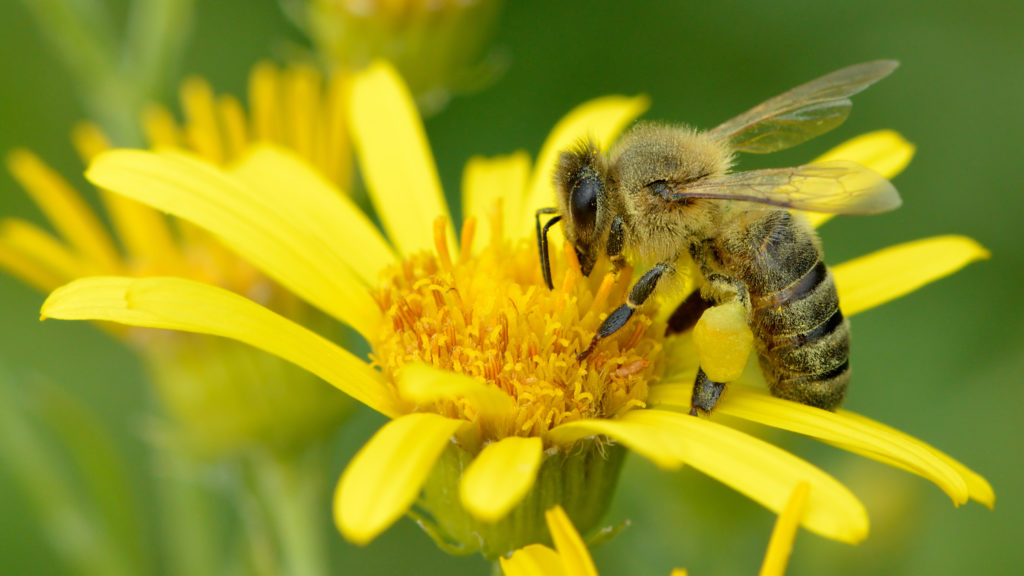
This honeybee, Apis mellifera, has a pollen ball in the “basket” on her back leg. (Ivar Leidus / Wiki; CC BY-SA 4.0)
In the winter, depending on the species, bee queens hibernate alone, and their colonies either die off or they stay alive in their hives as honeybees do.
Only females sting
Male bees don’t sting. The all-female worker bees can sting, but they’re not aggressive unless they think they’re under attack. When working in your garden, move about calmly, and they’ll go about their business as you go about your own—sometimes side-by-side. If you’re wearing a color they think might be a nectar source, perhaps they’ll check you out; avoid swatting at them, and they’ll soon move away. All about honeybees
All bees (except cuckoo bees) build nests, and they’re located in a variety of places. Some species, such as mason bees, nest in holes. Carpenter bees drill nesting holes in wood. Others, like miner bees, dig holes in the ground. Honeybee hives may be found in trees, tree hollows, or even walls and attics. Bumblebees may build their nests in places like existing, abandoned holes underground, under sheds or loose siding, in woodpiles, or in birdhouses.
Bee distribution
There are 4,000 native bee species in North America, with the southwestern U.S. and northern Mexico being home to the greatest variety in the world. Carol Hayden Bee Research Center says there are 1,000 to 1,200 species of bees “within a one-hundred-mile radius of Tucson,” where they’re located. Around the world, about 25,000 species have been described so far. Of these, there are seven species and forty-four subspecies of honeybees.
The smallest bees in the world belong to the genus Perdita. Native to the U.S. and Mexico, there are about 700 species and subspecies ranging in size from 0.08 to 0.39 inches (2.0 mm to 10.0 mm). Wallace’s Giant Bee, Megachile pluto, an Indonesian species, is considered the largest bee species in the world. The female has a body length of up to 1.5 inches (38 mm) and a wingspan of 2.5 inches (63.5 mm).
In the U.S., the smallest bee is Perdita minima, the size of a gnat. The largest bees are carpenter bees which measure from 0.75 to 1.0 of an inch (1.9 to 2.54 cm) in length.
Wasps
Distinguish wasps from bees by their hairless (or mostly so) body and skinny “waist.” The waist, technically called a petiole, is a somewhat cylindrical body segment (sometimes two segments) that fits between the thorax and the abdomen.
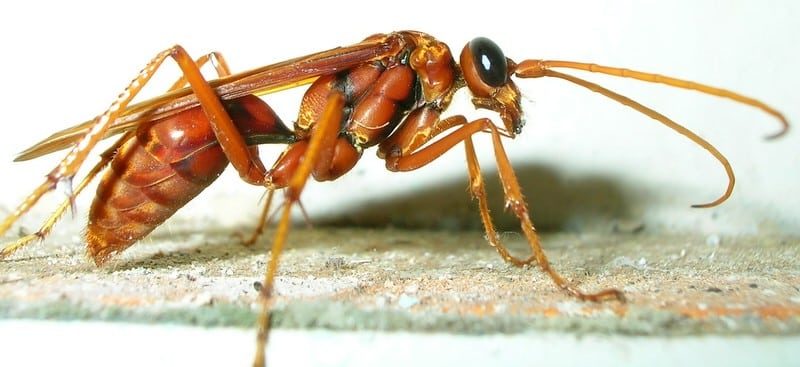
A Pompilid wasp from India, showing its skinny “waist,” a distinguishing feature of all wasps. (L. Shyamal / Wiki; CC BY 2.5)
Wasp larvae are omnivorous and fed bits of insects and spiders primarily by the females. As adults, though, most feed on nectar (exceptions being some parasitic wasps that lay their eggs in the bodies of live prey.) According to National Geographic, “Nearly every pest insect on Earth is preyed upon by a wasp species, either for food or as a host for its parasitic larvae. Wasps are so adept at controlling pest populations that the agriculture industry now regularly deploys them to protect crops.” 2
Some species are social and have nests and a caste system. Paper wasps (family Vespidae) are a good example, and one many people are familiar with. A fertilized queen constructs a nest containing a few cells, lays a few eggs in them, and raises sterile offspring.
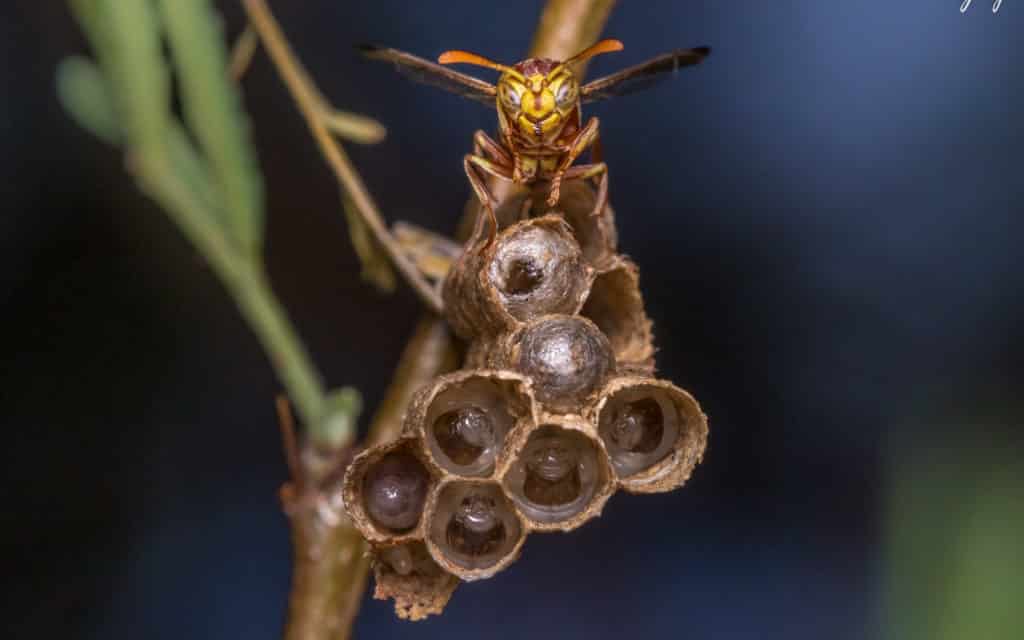
A paper wasp queen guards her nest. The cells contain her first offspring at various stages of development. (Yogendra Joshi / Wiki; CC BY 2.0)
Once they’re adults, the offspring take over the care of the queen and the hive. The queen’s job from then on is to lay eggs. The hive gradually grows bigger as the family grows larger.
Wasps nest in a variety of places. For example, yellow jackets commonly nest in the ground but sometimes in wall voids and attics. Hornets build nests in bushes, on tree branches, sometimes on the sides of buildings, and in attics and walls. Paper wasps construct their nests in trees, under the eaves of houses, in attics, and in other structures.
Distribution of wasps
There are more than 100,000 species of wasps around the world. All but about 1,000 species are solitary. The smallest insect in the world is the wasp mentioned earlier.
Ants
Ants seem to be everywhere, don’t they? They live in colonies underground, in wood, in trees, in mounds, in spaces under flowerpots, and inside unused garden hoses. And, of course, kitchens, whenever possible.
A queen heads her colony and usually has wings. The ants we see out foraging for food are all-female worker ants, which lack wings. Colonies may be very long-lived, with queens that live up to thirty years.
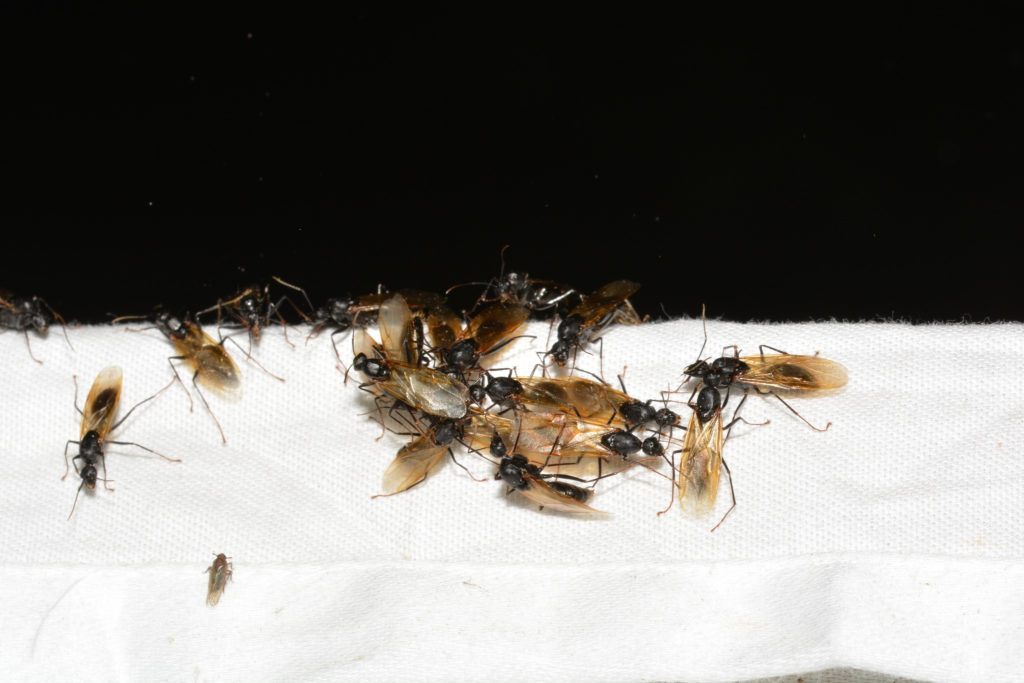
When a colony splits up (swarms), a different group of ants is produced—both males and females, they have wings and fly away from the old colony to begin new ones. (Andy Reago & Chrissy McClarren / Flickr; CC BY 2.0)
Most ants are omnivores with a varied diet that includes small insects, spiders, dead animals, fungi, seeds, and grains. They like sugary foods: carpenter ants, for instance, are particularly fond of a sweet liquid called honeydew, which is produced by aphids and scale insects. Ants like people-food a whole lot, too—syrup, jelly, honey, bananas, and other fruits, but also vegetables, bread, chips, and more. Pet food, also.
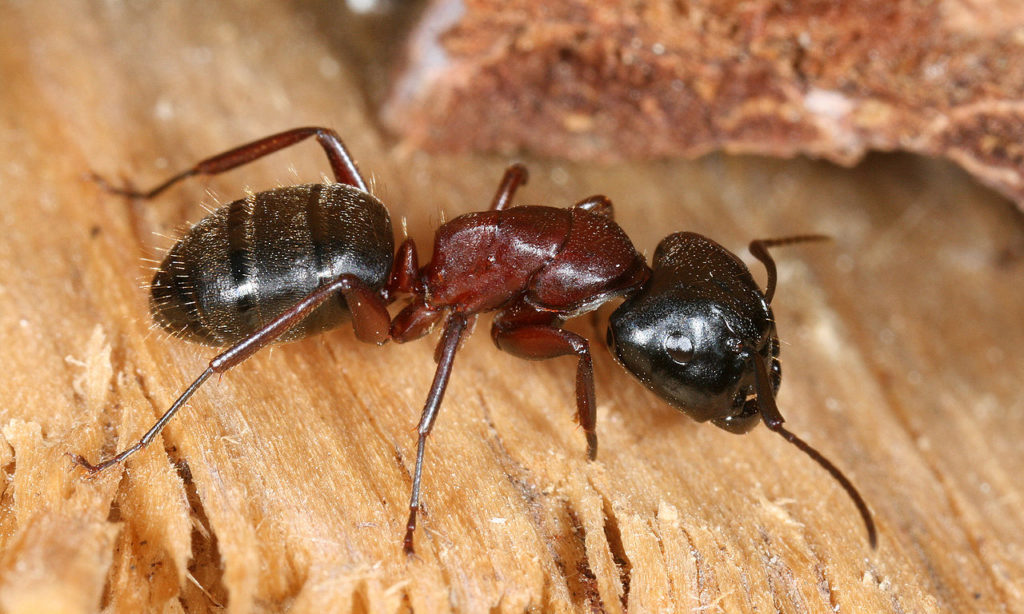
Despite their name, carpenter ants don’t eat wood. They feed on meats and sweets. If they come indoors, they feed on honey, jelly, other sweets, and pet food. (Richard Bartz / Wiki; CC BY-SA 2.5)
Depending on the source, there are an estimated 8,800 to 12,500 species of ants around the world, with thousands more awaiting classification. Somewhere between 580 and 1,000 species inhabit N.A., and they range in length from 0.030 inches long (0.76 mm) to about 0.5 inches (1.25 cm), the Black Carpenter Ant. That may seem large, but eight South American giants in the genus Dinoponera measure 1.2 to 1.6 inches (3 to 4 cm)!
Sawflies
Sawflies are wasps that don’t have a thin petiole (waist) between their abdomen and thorax. This difference makes many of them resemble flies. The “saw” in their name comes from the female’s saw-like ovipositor. Another distinction, with a few exceptions, is that their larvae look like butterfly or moth caterpillars, while bee, wasp, and ant larvae are grub-like.
Sawfly females use their ovipositor to cut into plants, including trees. They deposit their eggs in the holes, and the hatched caterpillars of most species feed on the leaves, usually in groups. Others feed on plant stems. Adults are carnivorous, but some species also feed on nectar and pollen. Sawflies don’t sting.
There are about 9,600 sawfly species in the world, with the majority in N.A. and Eurasia. The smallest adult sawflies are about 0.19 of an inch (3mm) long, but most are in the 0.20 to 0.79 inch (5–20mm) range.
*Images at the top of the page, left to right: European Honeybee, Apis mellifera, by Esteban Armijo / Flickr, CC BY 2.0; Figwort Sawfly, Tenthredo scrophulariae, by Nigel Jones / Flickr, CC BY 2.0; Black Carpenter Ant, Camponotus pennsylvanicus, by WelcomeWildlife, CC BY-NC-SA 3.0; Birch Sawfly, Cimbex femoratus, by Aleksey Gnilenkov / Wiki, CC BY 2.0
1 https://www.moreaulab.entomology.cornell.edu/ants-in-your-house/
2 National Geographic
More reading:
Insects in your yard: mayflies
Explore an insect-friendly yard
Why you should create a backyard wildlife habitat


